
From Canopy Growth (formerly Tweed Marijuana Inc.), where Phil Shaer is doing deals in a space that is part of a fundamental change in how society views cannabis, to the biggest corporate merger in Canadian history — Enbridge/Spectra — we have visited with legal departments small and large. And I can tell you they are all passionate about what they do.
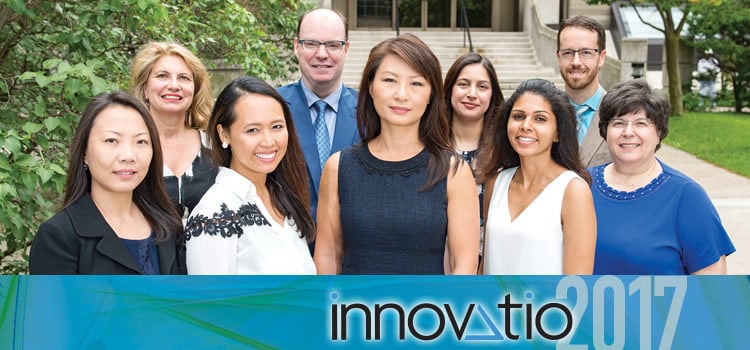
It’s been an amazing summer as we have travelled around Ontario and other parts of the country speaking to the winners of our fourth annual Innovatio awards.
From Canopy Growth (formerly Tweed Marijuana Inc.), where Phil Shaer is doing deals in a space that is part of a fundamental change in how society views cannabis, to the biggest corporate merger in Canadian history — Enbridge/Spectra — we have visited with legal departments small and large. And I can tell you they are all passionate about what they do.
This year we specifically made a call out to public sector organizations to consider submitting nominations on the work they are doing to make change in their legal departments. This was on the suggestion of our esteemed judges, who for the last few years have remarked that the public sector nominations really deserved their own category when you consider the different challenges they are up against. They face different regulatory challenges as well as taxpayer scrutiny on what they do. They are also often doing work with a small staff on a limited budget.
So it was interesting that the overall winner that emerged from this year’s impressive lineup would be acting general counsel Leola Pon and her team at the Toronto District School Board. The judges were impressed with what Pon has achieved in the context of a massive organization — the TDSB is the fourth largest school board in North America — and one that is often in the news and not always in a positive light.
Working with her opposing counsel from the public sector union, Pon came up with a way to reduce the time and cost involved in arbitrations (labour relations work was eating up 50 per cent of her budget) as well as finding ways to provide ready legal advice across the organization to improve her client service experience. Pon’s group was also chosen for the Diversity award in the public sector, small departments category. She has taken steps to hold law firms accountable for their diversity claims, and ensuring her team has training around anti-racism, anti-oppression and those with disabilities.
The themes I noticed this year in the other winning nominations included smart use of data (TD, ATS Automation, BMO, Husky Injection Molding) and access to real-time information. Using data in smart ways is giving legal departments the ability to make decisions faster, mitigate risks earlier and cut costs. As one of our judges, Dean Scaletta of Manitoba Public Insurance, put it, regarding the ATS Automation win for the compliance award, small departments, “For me, the most innovative aspect of the whole process was the effective use made of data that was already being collected and stored to manage and streamline a complex web of interrelated commercial activities. The ability of the new system to harness this readily-available data demonstrated tremendous insight to, and understanding of, the underlying business imperatives for ATS.”
Scaletta went on to say, “. . . it is clear from the narrative that the lawyers were key drivers of the development and implementation of the new system. It is one thing to develop a technically proficient system, but it is quite another to have that system effectively gather the data necessary to make appropriate risk-based business and legal decisions. ATS Legal made sure those data elements were identified and incorporated into the system in a manner that ultimately benefited the business as a whole.”
The other common element to some of the nominations was “real-time information” and “speed of the deal” (ATS, BMO, Enbridge, Spin Master and Canopy Growth). Quite simply these days, there’s no time to lose. I hope you enjoy reading about the winning legal departments chosen by our judges this year.
By Jennifer Brown
Category: Law Department Management
Department size: Small, public sector
Organization: Toronto District School Board
 As part of Canadian Lawyer InHouse magazine’s fourth annual Innovatio Awards program recognizing innovation in-house, the Toronto District School Board was chosen by the judges as the winner in the category of Law Department Management, small departments, and from all of the Innovatio category winners it was selected as “Innovation of the Year” for the work it did to improve service to its internal clients.
As part of Canadian Lawyer InHouse magazine’s fourth annual Innovatio Awards program recognizing innovation in-house, the Toronto District School Board was chosen by the judges as the winner in the category of Law Department Management, small departments, and from all of the Innovatio category winners it was selected as “Innovation of the Year” for the work it did to improve service to its internal clients.
The Toronto District School board is the largest in the country and has about 40,000 employees, the vast majority of which are unionized with either teachers’ federations, the Canadian Union of Public Employees or other associations.
The cost of dealing with all of the grievances that come out of the unionized employee groups was eating up more than half of the TDSB’s legal budget.
Working with the union legal counsel from CUPE, the TDSB labour relations legal team began a pilot project to deal with the significant backlog of grievances filed by CUPE.
About 16,000 TDSB employees are represented by CUPE Local 4400 in various support staff roles. In 2014, CUPE external legal counsel and TDSB in-house legal counsel began discussions to look at alternative approaches to the traditional labour arbitration model. At that time, there was a significant backlog of several hundred grievances that contributed to lengthy delays in having cases heard by arbitrators. The traditional process was also very costly — the TDSB’s legal spend on labour arbitration alone was approximately 50-60 per cent of its overall legal spend each year.
The problem, says Leola Pon, acting general counsel, was that the traditional arbitration approach was taking longer. Hearings would sometimes take a year or two to take place. The grievance processing system was also slowing down given the volume of grievances before them. The school board legal department came to a point where it needed to cut its budget for external fees on labour arbitration.
“Traditionally, arbitration was supposed to be a quick way of resolving disputes; unfortunately, the way labour arbitration has evolved over the years, it’s become a lot more technical. It was very inefficient and costing a lot of money as well,” says Pon.
Working with counsel for CUPE, a framework was developed for a new process.
“Once we got the ball rolling, it showed how we can achieve both outcomes for both sides through an expedited process,” she says.
The pilot expedited arbitration process included written briefs as opposed to viva voce hearings and some time limits given to arbitrators to issue their bottom-line decision.
“It may be considered rough, fast justice, but at the same time we were able to clear some backlog. It has evolved over time and we’re now at a phase of revising our agreement and including mediation upfront with a third party — we didn’t have that initially,” Pon says. “That has produced even greater benefits.”
Overall, the external legal spend for Q1 and Q2 of 2016/2017 has decreased significantly — it is currently 22 per cent of the overall total legal spend for 2015/2016. The TDSB anticipates a decrease in overall legal spend by at least 30 per cent by the end of the 2016/2017 fiscal year.
“We have cleared a significant backlog of grievances, reduced the number of scheduled arbitration dates and increased the efficiency of the arbitration process,” she says. “We are considering expanding it to our other bargaining units. The union counsel have also seen it as beneficial for their members.”
In selecting the TDSB for the overall award, the judges noted Pon’s leadership in tackling a difficult process and bringing value to a public sector organization often under the intense scrutiny of taxpayers and the media.
“They’re living in a very politically charged world and the fact they have come up with this solution and working collaboratively in a very charged environment I thought that was really good,” says Innovatio judge Dorothy Quann, general counsel of Xerox Canada.
Judge Lynn Korbak agreed, noting that the legal department “took the lead to provide consistency” and are “doing things above and beyond” in the board.
As part of its commitment to service excellence, the legal services team also undertook a number of other initiatives in the past year.
“We have been specifically asked to develop resources to support superintendents of education whose responsibilities have changed significantly under the TDSB’s new Learning Centres Strategy. Under the LCS, superintendents play a very key role in supporting school administrators and providing responsive service to parents/guardians on school-related issues, including issues of a legal nature,” says Pon.
The project included the launch of an intranet site containing legal information and Q & As on common legal issues such as family law matters, student records and privacy. The site also provides news on legal developments relevant to school boards, and biographic information on members of the legal department, development of knowledge management resources for TDSB lawyers and articling students containing precedents and other resources.
The team is also prepping for the selection of a new legal document management system.
By Jennifer Brown
Category: Law Department Management
Department size: Small
Company: Husky Injection Molding Systems
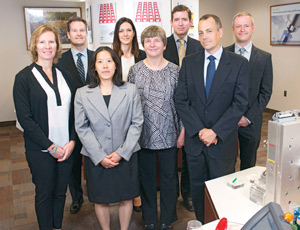 You may not know the name, but chances are you’ve encountered a plastic bottle or other product made by a Husky Injection Molding system.
You may not know the name, but chances are you’ve encountered a plastic bottle or other product made by a Husky Injection Molding system.
Husky Injection Molding Systems Ltd. is a supplier of injection molding equipment and services to the plastics industry. Husky equipment is used to manufacture a broad range of plastic products such as bottles and caps for beverages, food containers, medical components and consumer electronic parts.
The company’s head office and primary manufacturing facility is tucked up in an unassuming campus north of Toronto in Bolton, Ont. It was founded in the early 1950s and today the business spans 4,000 employees in 30 countries, with customers and competitors in 100 countries. This creates a complex array of legal matters for Husky, particularly in the area of intellectual property.
Husky’s in-house IP legal team, led by general counsel Michael McKendry, and director of legal and IP Rick Musgrave, have been working to optimize the management of the company’s rapidly growing IP assets and aligning them with the company’s business interests on a global scale, all with improved prediction of associated costs in mind.
Given the number of patent applications the company files per year, a major legal cost for the company has been patent procurement, so the legal team sought a systematic approach to identifying the company’s most important technology.
In doing so, they developed the following tools:
• Innovation scorecard for the patent review committee (representatives from the engineering, marketing and IP legal departments) to use in determining whether to pursue patent protection for new innovations and the scope of protection needed.
• Patent filing strategy tool with weighted scores for innovation attributes such as customer wants, cost reduction, revenue generation and breadth of exclusivity.
• Annual patent review system to prune patents and patent applications with reduced business and/or technical importance through asset sale or abandonment — significantly reducing strain on the budget.
Risk management
Husky’s legal team is tasked with clearing the considerable number of new products developed annually by the company and planned for the marketplace. To avoid the possibility of infringing on a competitor’s patent, opinions were sought from outside counsel on all new products and at considerable cost. To improve the process, Husky’s legal team sought to quantify risk associated with each new product.
In doing so, they developed the following:
• Opinion tool to determine when to engage outside counsel. The product life cycle, design-around options and available litigation defences are evaluated to gauge the risks associated with a competitor’s patent. Products are then categorized as low, medium or high risk. Low-risk products receive internal legal opinions.
• Risk assessment tool for higher-risk products. After outside counsel provides an opinion on a product’s risk of liability, the opinion’s findings are analyzed and risk factors allocated based on product attributes and business forecasts. This enables Husky to weigh the risks and benefits utilizing a quantified set of criteria and make business decisions based on a fact-driven analysis.
The above strategies have been phased in and are yielding annual dollar savings in the “high six figures” with better-quantified risk and reward.
The tools created have produced annual patent procurement cost reductions of more than 15 per cent, and in risk management, the tools created have yielded year-over-year cost reduction for outside opinions of 10 per cent.
Reducing cost and improved budget forecasting have positive impact for the entire corporation. Beyond that, there was a tangible benefit to other departments.
“Over the last 10 years, Husky built a vast patent portfolio that protected our core products and looked forward to protect potential future products.
“The number of patents directed to potential products outweighed the number of patents directed to current products by almost four to one — costing Husky significant sums to prosecute and maintain speculative patents. With the new process in place, we were able to free money from our budget and protect the products that mattered most. This allows me to gain a competitive foothold without straining our budget,” said John Knapp, product development manager at Husky.
The ultimate outcome is a more focused IP asset group.
By Jennifer Brown
Category: Litigation Management
Department size: Large
Company: Telus
One might view litigators as those on the front line of reacting to legal action as it hits an organization. But at Telus, Delbie Desharnais saw an opportunity for her litigation team to tackle risk before it came in the door.
Desharnais is associate general counsel at Telus Corporation where she is head of the company’s national litigation team. She is responsible for all of Telus’ litigation matters across the country, overseeing all cases against the corporation, which include many highly publicized consumer class actions. She’s also responsible for the integration of her national litigation team with the corporation’s different business units for the evaluation and prevention of lawsuits.

“Delbie has played and continues to play an instrumental role in fundamentally changing the way the corporation deals with its litigation matters,” said Yves Martineau, partner at Stikeman Elliott LLP, who nominated her for the award. “She adopts a hands-on, level-headed approach working efficiently and seamlessly with external legal providers in fashioning creative winning strategies.”
Desharnais co-ordinates external counsel services across the country, ensuring that the proper external resources are in place for the successful resolution of matters. She is at the forefront of negotiations with Telus’ providers, introducing and implementing alternative fee arrangements.
The class action prevention program means that her litigation team now acts proactively in identifying potential risks and implications of upcoming corporate decisions, as well as in the prevention of litigious matters.
“I believe a litigation team can play and should play a significant role not only in handling all litigation matters a corporation is facing and adapting good strategies but also at mitigating the reputational risks for the business and preventing litigation matters,” says Desharnais. “I think we’re often very well positioned because we work with so many different teams and different business units to see issues with fresh eyes and put forward creative and innovative thinking.”
To further Telus’ prevention program, Desharnais negotiated with Telus’ legal advisers to obtain advice with regard to potential class action suits and instigated “after action reviews” to continuously improve Telus’ practices.
She encourages the litigation team members in providing risk mitigation recommendations. As a performance objective, the litigation team conducts the “after action reviews.” As a result, the prevention program, the conclusion of added-value services and arrangements and creative litigation strategies, Telus has reduced the number of lawsuits in which it is involved, successfully increased the management of its business risks and cut its litigation-related expenses.
In some cases, Telus litigation team members have even acted as secret shoppers and made recommendations to improve training in retail environments.
“It’s a good way to have the team be proactive and have a collaborative approach,” says Desharnais.
Telus litigation also involves its external counsel, in the area of class actions, for example. They offer “pro bono” advice having been involved and how to improve practices.
“We include in our retainer not only the specific defence for the matter but having a more general view to improve our practices,” she says.
“I find it really encourages our team to be proactive and have a level-headed approach with the internal teams and external teams. It contributes to a reduction in litigation matters that the corporation is facing and cuts the litigation-related expenses,” says Desharnais. “Overall, I think it contributes to better mitigation of our risks.”
“The approach is in line with [the] customer-first philosophy at Telus,” she says. “I find it’s a good way to set the table for positive resolution of a matter and often salvage an important relationship with a customer.”
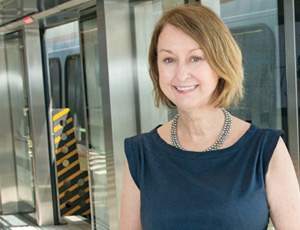
When it comes to diverse workforces, the legal department at Metrolinx is achieving a balance many would aspire to, but beyond the legal group, it’s general counsel Mary Martin who sees herself as the “heart and conscience” of the diversity and inclusion at the provincial Crown agency.
The legal department is a microcosm of diversity at Metrolinx, says Martin, who is executive vice president, general counsel and corporate secretary. The department of 23 lawyers is headed by Martin and two senior female associate general counsel. Lawyers at the director level are split 3:2 women to men and the department contains 57 per cent female lawyers and individuals from more than 14 diverse ethnic backgrounds.
“I think complex problem solving, which we seem to have lots of, really benefits from having diverse perspectives. Each of the lawyers in the departments bring their individual perspectives to issues,” says Martin.
Through her personal commitment to D&I, Martin advocated for a leadership role for the legal department in Metrolinx’s D&I program and stepped forward to help further D&I in the organization in 2015 after Metrolinx conducted a census to assess the state of diversity and inclusion in the workplace, based on employee experience. It revealed that 48.4 per cent of respondents did not answer “strongly agree” or “agree” to the statement “all employees have an equal opportunity to advance regardless of age, gender, race, etc.”
Based on the results of the survey, Metrolinx set out to establish a D&I program to ensure all individuals at the agency feel welcome, are afforded the same opportunities, are treated with dignity and respect and are able to fully participate in the workplace.
“When I looked at the results of the survey there were just too many respondents who reported that they felt some time in the last couple of years they had not had an opportunity to advance by reason of gender, sexual identity, age, ethnic background or any other number of diversity dimensions,” says Martin.
Metrolinx’s broad D&I program kicked off in early 2016. Although in its early stages, Metrolinx has recognized that a diverse workplace is not the same as an inclusive workplace. Ensuring representation of women, visible minorities, gays, disabled and other diversity groups within the workplace is just a starting point.
“Lawyers generally, and Mary in particular, are well suited for a key role in D&I initiatives, given their training in the general principles of law and equity. In-house lawyers can also effectively use their position to raise awareness and address issues relating to poor D&I practices. Apart from being the right thing to do, Metrolinx lawyers saw that a strong D&I strategy can be an effective way to address tangible risks for a company through human rights, accessibility, accommodation and labour and employment issues,” said Heather Platt, senior legal counsel at Metrolinx, who nominated Martin for the award.
Ultimately, Martin was selected as Metrolinx’s executive champion of diversity. As executive champion, Martin is responsible for initiating and delivering on the D&I program. Leveraging her corporate governance experience, Martin has established a D&I leadership council to provide program oversight. The council is comprised of diverse individuals from across the organization and is responsible for: defining and delivering on Metrolinx’s D&I Strategy; establishing key performance indicators to measure success; increasing knowledge and awareness of the program through employee communications; and working with human resources to ensure that equitable D&I practices are embedded in Metrolinx’s employment decisions including hiring, development, promotion and succession planning.
Metrolinx’s five-year vision is to have an inclusive culture that fully enables everyone to be authentic and tap into their full potential.
In June 2016, Martin launched Metrolinx’s diversity and inclusion intranet site that highlights Metrolinx’s D&I program, key elements of the governance structure, success story announcements and information on culturally significant dates. The site features a series of videos of senior employees, executives, directors and program staff, speaking about personal diversity challenges. Metrolinx intends to measure the success of its D&I program annually through key questions on its employee survey. These will track results to the 2015 census.
By Jennifer Brown
Category: Diversity
Department size: Small
Company: Nissan Canada
Fernando Garcia lives and breathes the importance of promoting diversity every day and sees it as a competitive advantage and way to add value across his team, company and legal community.
As general counsel, government affairs and corporate secretary at Nissan in Canada, Garcia is an advocate of diversity and inclusion in ways that not only benefit his company but future lawyers, too.
At Nissan, diversity is a “source of strength and integral” to its corporate strategy. Diversity is enshrined in the company’s corporate policy as one of the primary pillars of the “Nissan Way,” the values that guide all employees in the way they do business and the way they approach their day-to-day interaction with the community and with fellow employees. This is evident in the Nissan Way message that states: “Diversity is OUR advantage, Diversity is MY advantage.”

The legal department is in many ways seen and treated as the leaders and cheerleaders for diversity within Canada.
“His commitment to his lead role in the company’s legal team is matched only by his commitment to diversity and inclusion, both within the corporate fabric of Nissan and in the community generally,” said Helen Fotinos of McCarthy Tétrault LLP, who nominated Garcia for the award.
When selecting firms to provide services for Nissan Canada, diversity is an important consideration for making decisions. Law firms are required to demonstrate and provide examples of what they are doing to support diversity initiatives.
“In RFPs, when I’m looking for a new service provider, one of the first questions I ask is what are you doing in terms of diversity and inclusiveness — give us examples, give us numbers and documentation to show what you’re doing,” Garcia says.
Garcia is a firm believer in leading by example and that change starts at the top. He also sees technology, including artificial intelligence and Big Data, as a way forward to promote diversity even further. This past year, he became involved in looking at the marriage of law and technology and the positive impact it can have in inclusion and diversity within the legal profession. By filtering success rates of litigation lawyers, it helps eliminate the “the old boys club” mentality of lawyer selection for matters.
Garcia is recognized company-wide as a champion in the advancement of diversity. Jeffrey Webster, Nissan’s director of diversity and inclusion, remarked, “Fernando brings a wealth of experience and passion to the Americas Diversity Council and is instrumental in shaping diversity and inclusion programs/initiatives throughout the North American region. Fernando leads by example and has positively impacted Nissan’s corporate culture. We are proud of his many accomplishments and value his dedication to promoting diversity and inclusion both internally at Nissan and externally in the community.”
Garcia’s work on the Corporate Counsel Advisory Board for the Law Society of Upper Canada’s Law Practice Program has translated into work opportunities for a number of young lawyers in Ontario from diverse backgrounds and foreign-trained students by providing the opportunity to be considered for and obtain practical and hands-on Canadian legal experience at Nissan. Garcia also takes his commitment to diversity and his unique perspective continent-wide as one of two Canadian members of the Nissan North American Executive Diversity Council, which includes the most senior executives from Nissan North America. This role saw him transform the legal department’s culture at Nissan Canada, where diversity and inclusion were integrated as specific mandates into the team’s practice, encouraging meaningful relationships internally, externally and with the community at large.
Under Garcia’s guidance, the legal team at Nissan has seen tangible changes in the way they interact among themselves and with their clients and the community in general.
By Jennifer Brown
Category: Diversity
Department size: Small, public sector
Company: Toronto District School Board
When you lead the legal department for one of the most diverse school boards in the country, the time comes when you realize those providing services to the organization should be demonstrating a commitment to diversity as well.
The Toronto District School Board is the largest public school board in Canada and fourth largest in North America with 40,000 employees and 250,000 students in the city.
In 2016, the TDSB started work on developing new strategic directions to support its Learning Centres Strategy. The LCS involves a board-wide restructuring that resulted in the grouping of schools into one of four hubs where staff can collaborate and share resources.

The three strategic directions are: Vision for Learning and Service; Service Excellence; and an Integrated Equity Framework. Together, the strategic directions are aimed at achieving “Equity of Access and Outcome for All Students.” As a result, TDSB legal services undertook a close review of its role, responsibilities and opportunities to support the objective and legal focused on three key projects:
Legal services RFP
In November 2016, the TDSB launched a Request for Proposals for legal services in eight areas of law. They added “demonstrated commitment to equity and diversity” as a selection criterion with points awarded for tangible examples of this commitment — for example, sponsorships, speaking engagements, involvement with organizations representing lawyers from ethnic backgrounds and law students from diverse backgrounds.
Acting general counsel Leola Pon says she was inspired to do this by the leadership of BMO Financial executive vice president and general counsel Simon Fish, who led a similar program a number of years ago. At the time, Pon was an associate at Hicks Morley Hamilton Stewart Storie LLP.
“Understanding that one of the largest companies in Canada — a bank — made this such an important criterion for them, I thought if I ever had an opportunity to do it in the future I would do it as well. We’re so glad we’ve had the opportunity,” she says.
In the RFP, 10 per cent of all points were allotted to a demonstrated commitment to diversity. The proponents had to give examples of what they do — such as sponsorship of ethnic lawyer associations or programs involving LGBTQ. A simple statement of commitment wasn’t sufficient — Pon was looking for actual demonstration.
“Some firms were able to demonstrate that, but, unfortunately, some firms had a simple statement and I think nowadays, especially if they know the TDSB and our commitment to equity, they should know you have to do more than a simple statement. I actually encouraged a lot of firms to take another look at how they approach their submissions to actually devote quite a bit of time and effort to filling out that section,” she says.
In some cases, firms analyzed their own workforce statistics and went beyond showing the male/female makeup of their lawyers. “I thought that was extremely important. The concept of equity and diversity is much broader than that,” she says. “I am trying and we have attempted to include equity and diversity in all aspects of our procurement process.”
As a result, Pon says, there is greater awareness in the legal community that the TDSB is committed to diversity and achieving equity, and that it expects its legal service providers to share this commitment.
“No other TDSB department has, to our knowledge, included this criterion in its procurement process,” says Pon. “We have shared this idea with leaders of other departments and have recommended to the procurement department that they include this as a mandatory selection criterion for all RFPs.”
Members of the TDSB legal services team have also participated in learning opportunities such as anti-racism and anti-oppression training, service excellence workshops and equity workshops. All TDSB lawyers participated in a Law Society of Upper Canada CPD session by David Lepofsky: “Ensuring Access to Your Law Office and Services for People with Disabilities.”
As part of its service excellence commitment, TDSB lawyers delivered human rights training sessions in 2016 and 2017 for school administrators and superintendents of education.
“We often consult with TDSB staff who have expertise in equity issues. We hope to positively influence other TDSB departments and leaders by sharing our ideas, initiatives and advice,” says Pon.
By Jennifer Brown
Category: Compliance
Department size: Large
Company: BMO Financial Group
If you’re in the business of tracking compliance in the financial sector, knowing what your risks are day to day is critical. While the traditional approach in the industry is to do an annual review of all possible regulatory risks, BMO Financial Group decided it was time to move to a more current practice.
The project was led by Thomas Jones, managing director in BMO’s compliance department. He oversees a global team — compliance testing and practices — with responsibility for running of the enterprise compliance program, which entails risk assessment, policy and procedure work and board reporting, as well as being the compliance testing centre of expertise, across BMO’s lines of business.
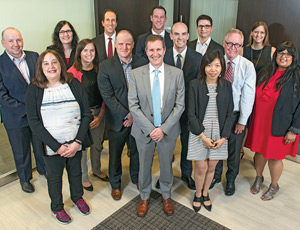
Under Jones’ direction, BMO launched real-time compliance risk assessments instead of an annual “big bang” approach to the assessment process, where an organization would review all of its potential regulatory risk at one time, which is typical for the industry.
The result of introducing this system effectively increased both efficiency of the process and accuracy of the assessment’s results.
“We took a fresh approach with real-time risk assessments through three different ways,” says Jones.
One way is based on trigger events, which could be a proposed new product the bank wants to launch that would cause an assessment of what risk does it pose to the organization before launch. Launching a new product may change the regulatory risk of the business unit; this is accounted for in the real-time compliance risk assessments.
The second way the process was revamped was through a standard control library and grouping similar risks together — if two regulatory risks are similar, the assessment is to document only once. This has proved highly effective, with the line of business documentation requirements reduced by approximately 60 per cent.
“That standardization gave us consistency and better accuracy across all of our different lines of business participating in the compliance risk assessment process,” says Jones.
The third way is the grouping of requirements to make it more intuitive for the lines of business to understand the regulatory requirements applicable.
“When you participate in an annual process, the number of hours it takes to go through that process is substantial,” says Jones. “It’s thousands of hours across all the different businesses. When you do a real-time, ongoing process based upon events, it spreads the work throughout the year and in aggregate actually reduces the time; and you have information every month and it doesn’t go stale the month after you finish the exercise.”
With real-time assessments, “trigger events” such as changes in the business, external environment and/or controls lead directly to an update of the compliance risk assessments.
The compliance risk assessment process is triggered by the “events” rather than waiting until an annual assessment, which can be months later. The results provide real-time information for management to act upon.
With risk assessments conducted as needed throughout the year, the risk assessment process is more consistent, the information used to conduct the assessment is more relevant and the results are more accurate.
Lastly, grouping of requirements into a balanced, intuitive level makes information understandable for the line of business and allows compliance to better calibrate similar risks across the bank.
The new approach redefined compliance risk assessments, which are the cornerstone of BMO’s Enterprise Compliance Program. Because it is real time, they can integrate the results with other parts of their program such as monitoring and testing and issues management.
By Jennifer Brown
Category: Compliance
Department size: Small
Company: ATS Automation Tooling Systems Inc.
Managing compliance in a fast-growing company that spans multiple jurisdictions in North America, Europe, Southeast Asia and China can be a major challenge, but Elliot Burger and the legal team at ATS Automation Tooling Systems saw an opportunity to leverage compliance and business benefits in rolling out new trade management software.
ATS is an engineering firm headquarted in Cambridge, Ont. that specializes in factory-wide automation systems, serving multiple fields such as automotive, life sciences, nuclear energy and consumer products.
From a compliance perspective, ATS was a victim of its own success, says Burger, director, global trade compliance and legal counsel with the company. “We’ve grown fairly robustly in the last 10 years.”

That growth had resulted in 24 manufacturing facilities in 18 countries using seven different enterprise resource planning systems and an employee base of about 4,000 people speaking 13 different languages. “Just from the start that’s a compliance challenge that we had to deal with. Beyond that, because of the acquisitions, we ended up with accounts payable groups and supply chain management groups that were somewhat fragmented who had historical relationships from a trade perspective and were operating on a regional basis and not thinking about the global compliance concerns of the parent entity,” says Burger.
“Trade compliance is one of the fastest moving areas of compliance out there and perhaps one of the fastest moving areas of law. And that’s at the best of times and we’re all aware of what’s happening now in terms of speeding up those challenges,” he says.
Valuable commercial terms negotiated by legal were at times left out of orders or substituted by local buyers. With reporting and record-keeping functions located in each country, ATS legal needed to find a solution to the compliance gap.
The challenge was heightened by the absence of a corporate-wide ERP system and a lack of centralized control over multiple supply chain and accounts payable groups in individual subsidiaries around the world.
“When our legal group sat down and assessed what was in front of us we realized we weren’t going to be able to unify the purchase order management system or the ERP systems across the company, so we weren’t able to draw on the typical transparency tools a business would normally rely upon,” he says. “So we had to come up with something more innovative.”
The answer was a global trade management system where all incoming and outgoing parts, services and end-use product orders could be compiled, defined, categorized and analyzed.
A system was custom built for ATS, with ATS spelling out the specific requirements of its compliance program. The TMS solution ATS chose gave the company a portal where the company could track all freight movements across the company with a central view to providing compliance advice.
“It’s given the legal group the transparency we want from a trade perspective. We have a portal to put all due diligence on our suppliers, our customers, our third parties, we can send out compliance messaging to all divisions on a single portal. You can also put training on the portal and that’s important given how quickly trade compliance is moving right now,” says Burger.
The TMS allows policies and procedures to be distributed and implemented globally, and due diligence on suppliers, customers and third parties to be managed and stored.
In the absence of centralized control, ATS’ various supply chain groups were collectively employing 55 different freight forwarders and 13 different trade brokers. As a result, the AP groups were receiving thousands of freight shipment invoices per month with little information on the underlying orders or shipping cost implications. ATS legal simplified the relationships with external service providers, and alleviated the administrative burden of operating a multinational supply chain system, while building a tool that served the compliance needs of the parent company.
Burger estimates it will save the company $2.4 million when rolled out worldwide.
By Jennifer Brown
Category: Law Department Leadership
Department size: Large
Company: Avigilon Corporation
When Joel Schuster joined Avigilon Corporation three-and-a-half years ago, the fast-moving industry of video analytics was booming. The company’s patent portfolio was growing fast and there was a need to monetize and track it more closely.
Avigilon, founded in Vancouver, B.C., designs, develops and manufactures security surveillance products including video analytics, network video management software and hardware. The company employs about 1,200 people worldwide.
As chief legal officer, senior vice president and corporate secretary, Schuster oversees the entire legal department and external counsel in connection with transactions, litigation, intellectual property (including trademarks, copyrights and patents) and general legal matters.

He also monitors and advises on legal development strategic matters and oversees the company’s tax and HR functions.
Technology plays a huge role in getting work done in the company’s legal department.
“We’re always looking for ways we can work more efficiently and better and technology is a great way to work faster,” he says.
He oversees a team of approximately 30 individuals, including legal, tax and HR functions — 10 are lawyers. The group is split between two groups, one in Vancouver and one in Washington, DC.
Schuster has built the legal department around internalizing outside services, such as employment law, patent agents and tax specialists, reducing external spend while improving internal responsiveness and quality of work.
“Quality, timeliness and being business-minded are key elements to Schuster’s approach to in-house law,” says Roch Ripley, partner with Gowling WLG in Vancouver, who nominated Schuster.
In three-and-a-half years with Avigilon, Schuster has worked on a number of key matters, including generating and monetizing an IP portfolio of more than 750 patent assets that cover the various technologies Avigilon works within, most notably video analytics.
When Schuster started with the company, it had a “very modest” patent portfolio.
He has also led numerous large transactions and the launch of a global patent licensing program in early 2016, leading to new licence agreements with numerous licensees.
“Right away, we made the decision to bolster that to protect our innovations and we have a patent licence program. So we go out to other companies in the industry and we license the patents so we share in the upside as video analytics are adopted across the industry; we can share in the profit,” he says.
Schuster has implemented a number of other technology practices in Avigilon’s legal department. Last year, he oversaw the implementation of a global task management system called QuickBase, allowing members of the team to check the status and timing of every project being worked on by the legal department.
“Other people in the company can see where we’re at in a project at any time,” he says.
Additionally, Schuster oversaw the implementation of a patent research system and a patent document system to support the company’s IP department and more than 750 patent assets.
Schuster has also overseen the implementation of a document and file management system, Worldox, to combine in a scalable location the entire department’s documents.
Finally, within the HR role, Schuster oversaw the implementation of SuccessFactors, an HRIS system used by the company to interface with its employees and their records.
Schuster is a member of the bar of Massachusetts and British Columbia.
By Jennifer Brown
Category: Law Department Leadership
Department size: Small
Company: Alterna Savings and Bank
When Alena Thouin arrived at Alterna Savings and Bank three years ago, there was no internal legal department and the financial institution was in the midst of a tremendous growth spurt. Her mandate was to create a team to address legal issues as well as help the organization meet immediate demands that included taking the 100-year-old institution into the digital age at a time of increased demands in the area of compliance.
Thouin is general counsel and corporate secretary at Alterna, providing leadership to the legal and compliance group as the chief legal and compliance officer.

She leads an eight-member team of lawyers and compliance officers located in Toronto and Ottawa. Since 2014, she has built the legal and compliance function and transformed it into one that serves “as an invaluable partner to its business clients,” wrote Dina Vardouniotis, senior vice president and chief marketing officer at Alterna, in her nomination of Thouin.
“During a transformative time at Alterna, Alena brings a critical perspective to the table that is rooted in her legal expertise but also highly balanced with a solid business acumen,” said Vardouniotis. “She manages complexity and ambiguity exceptionally well, bringing an innovative approach to solving problems and tackling opportunities.”
For example, Thouin was involved in the launch of a major digital offering across the country with “innovative retail banking solutions in a heavily regulated sector,” managing both federal and provincial considerations.
She was part of implementing “me-to-me” payments, which was part of the launch of Alterna’s online banking service.
“We have had our banking licence for over 15 years and have been a financial institution for over 100 years, but in the last couple of years, there was a strategy put forward to increase our online presence so the online banking initiative was around launching the online, everyday banking package for consumers,” Thouin says.
While the technology existed to make it happen, the complicated piece for Thouin and her team was the compliance portion. They sat down with the technology and product development team at Alterna and came up with a solution. “One of the ways we wanted to differentiate ourselves from others was to allow new clients coming from other financial institutions to transfer their funds easily when they make a choice to join Alterna. One of those was with me-to-me transfer — a technology process where you can take money and transfer to [an] Alterna account. It sounds simple, but in the past, it was not something easily achievable. The compliance piece was tricky, but we hammered out a process that would still be compliant with regulatory requirements and in a way others haven’t been able to get there yet,” she says.
Thouin sees technology as the path toward providing improved service both internally and externally.
“Within my team, we’re very focused on using technology to enhance our ability to provide services. I have both compliance and legal teams and both are very focused in making sure we are using technology as a tool to make ourselves better business partners and a more effective and efficient service,” she says.
When it came time to improve the organization’s vendor management process to make it more efficient the first question was could it be automated?
After doing some cost-benefit analysis, it was decided to build out the existing system to make it work for the team.
“She has managed to transform a perfunctory cost function into a forward-thinking team of individuals,” said Vardouniotis.
“She created, built and transformed the legal department into a valuable player in all cross-functional organizational initiatives.”
By Jennifer Brown
Category: Law Department Leadership
Department size: Small, public sector
Company: Port of Prince Rupert
Andrew Mayer joined the Port of Prince Rupert in 2008 as a director and was vice president, commercial and regulatory affairs and general counsel until he was appointed to the bench of the Supreme Court of British Columbia in April.
As a member of the executive team, Mayer provided legal and strategic business advice to the executive team, the CEO and the board of directors.
He oversaw regulatory matters affecting port operations and led commercial negotiations in respect to new developments and terminal expansion projects. He was also responsible for the negotiation and implementation of settlement agreements with the local First Nations. Mayer managed a team of two in-house counsel and two support staff as well.
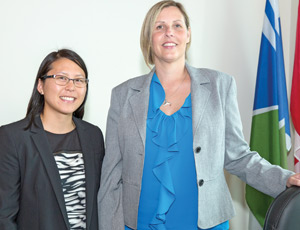
Realizing that the organization didn’t have any central repository for all of its contracts — various departments were managing them, so there was no easy way to track them — Mayer purchased software from Legal Suite to store and manage all PRPA contracts. From there, he worked with his team to develop a contract compliance program.
“When I started working at PRPA with Andrew, he had recently purchased Legal Suite, which once populated would act as a central repository where all the PRPA contracts could be kept and important dates such as lease terms, rent reviews, expiration dates, reporting obligation dates, etc. could be diarized and our department would receive alarms so we could ensure nothing was missed,” says Shelby O’Brien, director, commercial and regulatory affairs with the PRPA. “The software also allows us to conduct reports, so, for example, we can easily see how many current confidentiality agreements are in place. We have since populated Legal Suite with nearly 500 contracts.”
As the team’s knowledge of Legal Suite developed and the PRPA continued to grow, Mayer recognized a need for a more fulsome contract compliance program that would not only pay attention to date specific compliance issues but could also track other compliance matters. Last year, he tasked O’Brien and Karen Choy to meet with all of the departments and review contracts to consider how they could improve contract compliance.
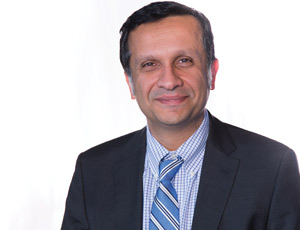
“In this case, contract compliance refers to ensuring that both PRPA and the other contracting party are meeting their obligations throughout the life of the contract,” says O’Brien.
“For example, if we have a contract where there are obligations on a tenant to conduct regular environmental tests and provide PRPA with the results, that would be a compliance issue we would want to be able to track in our new contract compliance program,” she says.
Another example would be if the PRPA had an obligation to provide certain information to the other party. “It may be the responsibility of another department to provide that information and we would want to be able to confirm that it was completed as required under the contract,” O’Brien adds.
The program is still in its early days as the department spent most of last year researching and coming up with recommendations.
“This year, we are beginning to implement those recommendations,” says O’Brien. “Our recommendations included some changes in how we use Legal Suite and in particular how information is inputted to ensure consistency and accuracy.”
The department is also providing more information to the management team on newly executed contracts that include information on compliance items for which each department would be responsible.
“We are then able to follow up with each department and record the information relating to these compliance issues in Legal Suite so we will have a running history of the contract,” she says.
By Jennifer Brown
Category: Risk Management
Department size: Large
Company: BMO Financial Group

This may sound familiar to many large organizations: Each month, you exchange important data between business units on Excel spreadsheets, but you never fully capture the data in a way that can benefit the organization in real time.
At BMO Financial Group, the bank’s litigation group was doing this kind of exercise with the bank’s operational risk group on a monthly basis. The exercise was time consuming, had the potential for human error and required many, many steps.
The litigation practice management group is a group within the bank’s legal and compliance group comprised of litigation lawyers supporting different areas of the bank’s business. It was created to ensure that best practices and processes for litigation risk management were adopted uniformly across the company.
The litigation group feeds data about losses through to the operational risk group at BMO. On both ends of the process, they have technology that’s owned and managed by different groups at BMO.
“For a long time, we had a process where we would take data from one system and pass it in a spreadsheet format to people who owned the other system and then they would map it into their system,” says Jane Waechter, associate general counsel and head of the litigation practice group at BMO Financial Group. “So we decided we should have those two systems speak directly to each other and take out all the manual process.”
For this initiative, the LPMG working with BMO’s operational risk group took the largely manual monthly process of reporting risk events on spreadsheets, which involved multiple groups across the bank, and transformed it into an automated, real-time activity.
This was achieved by integrating existing technologies — the legal group’s case management tool and the risk group’s database of operational loss events, one of which would be litigation losses.
“We partnered with our technology group and allowed a direct feed of information from the litigation tool into the risk tool without any manual intervention,” says Waechter.
Considered a “highly complex integration,” the benefits of the process improvement are considered significant. The result has been more efficient and timely reporting of legal risk events to risk — continuous, real-time, information flow to risk ensures that the most current and timely information about risk events is being used.
Prior to the automation project, a significant amount of lawyer and paralegal time was spent preparing and reviewing monthly spreadsheets and then directing and responding to questions from risk. Similarly, when risk received the monthly spreadsheet, considerable time was spent transferring data from the spreadsheet to the risk system. The automation has reduced the internal resources required to deliver risk event data to the risk group, as well as greatly reduced the churn that previously followed the delivery of data.
“Basically, we’re reporting our loss events in real time to risk instead of a time delay of more than a month,” says Waechter. “We’ve found between the two groups of legal and risk we’ve eliminated 276 hours of person time per year, and in the legal group alone we have 50 per cent fewer steps to take to do this reporting every month, and we found our email traffic has gone down by 50 per cent between the two groups each month. So we’re thrilled the systems are doing what they are best at and we are doing what we’re best at.”
Now, the data offers greater transparency to risk about the legal risks in the bank’s lines of business, improves risk’s reporting to management and furthers BMO’s ability to provide accurate and timely reporting to regulators.
There is also a lower risk of human error because of the increased accuracy of risk events as a result of safeguards built into the legal group and risk operating systems.
Additionally, the safeguards either prohibit inconsistent information about risk events, ensuring the accuracy of the enterprise’s risk events, or will flag items that appear to be inconsistent so they can be resolved immediately.
Keeping risk event data in the legal group’s system allows them to analyze the data differently and identify trends, which further enhances the systems risk management capabilities.
This innovation provides the legal group with better data analytics to enhance risk management discussions with its stakeholders.
In addition, better analytics are now available to the Legal Group for assessing both short- and long-term trends.
By Jennifer Brown
Category: Risk Management
Department size: Small
Company: Golder Associates Ltd.
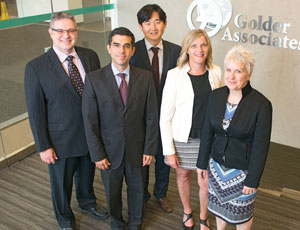
During the continued downturn in the oil and gas and mining industries, it was important for Golder Associates Ltd., a global engineering company focused in the energy sector, to manage risk across the board and still remain competitive.
Building on its “Making Legal Services Better” campaign, the legal team under the leadership of Canadian general counsel Tony Linardi embarked upon phase two of its initiative.
“By being involved at the earliest stage of a business opportunity, we’re better able to help the operations team assess the real risk involved in a project and develop an execution plan,” says Linardi, GC, corporate secretary and principal in Canada, overseeing teams in Vancouver, Calgary and Mississauga.
![[Vancouver team] Alyse Wilkinson, Mary Wharton, Nicole Clark. Photo: Robin Kuniski](https://www.canadianlawyermag.com/staticcontent/AttachedImages/Innovatio2017_Golder.jpg)
All levels of the company agreed that risk management was the key vehicle for the legal team to add commercial value to the bottom line. This was done by building trust and targeting high-value legal assistance associated with “Project Risk.”
“As a consulting engineering firm, with thousands of design and construction projects around the globe, managing project risk is key to our survival,” says Linardi.
The development of a structured Project Risk Committee approval process was required, but to create an efficient model to work for a company where a $1,000 concrete testing project in Canada could create the same or more liability as a $25-million solid waste landfill project in Africa was a challenge.
A system was created that did not just rely on the typical dollar value for thresholds. Instead, a qualitative approach was taken so that the PRC would be triggered by real risk, not an arbitrary dollar value. Approximately 25 PRC distinct triggers were finalized of actual risk factors (scope of service, complexity of the project, geographic location, contract terms, technology use, etc.).
Alyse Wilkinson, team leader, senior contract specialist, and Mary Wharton, executive assistant, were the “stars” of the program, says Linardi. Wilkinson took on the initiative to ensure that the principals and associates who were used to “calling their own shots” understood that this was an evolution of the risk management program.
“She rolled up her sleeves to fill the ‘execution gap’ that existed between the design and implementation of the process,” says Linardi.
Working through the applicable trigger(s) with project teams to determine how to best mitigate risk, increase profit and present to the PRC, Wilkinson modified the templates and process and developed frequently asked questions and training components to help focus on key objectives. She found ways to fill the gap between management and operations and streamlined the process so that items could be approved by email and projects unlikely to succeed could be abandoned at an early stage, saving proposal costs and effort. She then worked with each individual legal team member to ensure they knew the process, before it was rolled out to their regions.
Wharton developed a reporting system of conditions not only for approvals but also for monitoring compliance with the conditions that the PRC had set. Even if a project was approved, it wasn’t carte blanche; the proposal may have conditions or the project may have monitoring obligations during execution.
The implementation and revisions to the process led by Wilkinson and Wharton not only manage risk but also save the company money by having Golder focus on pursuits that are likely to be more profitable. An additional piece was the integration of this process directly into the sales funnel.
In addition to the PRC, the team targeted finance, human resources, claims management, real estate and procurement to see if legal could help manage some of the risk in their groups.
Finance and collections
“Daily Sales Outstanding” is a key cost to many businesses. Legal usually doesn’t get involved until a large claim arises for non-payment. Wilkinson contacted more than 100 of the company’s largest DSO offenders and created a “hit list.” Within three weeks of initial contact, $4 million of the $11 million of revenue stuck in overdue DSO was back in Golder’s pockets. Thereafter, a joint finance-legal team working group was developed. The new automated process gives the legal team weekly cash flow reports, with insights into overdue accounts, in order to have the right team member assist with the collection. Now, due diligence is performed at an earlier stage and the project team works with legal and finance so that viable collections are handled internally, with only the outliers going to an external collections group. The process has now been implemented across North America.
Human resources
Nicole Clark, senior legal counsel, was charged with making the corporate services teams feel as though they weren’t an afterthought when it came to obtaining help from the legal group. The biggest impact was in the relationship with human resources. With the decline in oil prices and mining, significant restructuring occurred, including more than 400 terminations in a short period of time. Working with HR, looking at available transitions and performance improvement plans, she found a working formula to balance Golder’s obligations with the demands of employees. An intake form, combined with a unique severance calculator, allowed for proper discussions to occur. Clark’s handling of all employment-related disputes created a streamlined and consistent process, which resulted in less than one per cent of restructuring events commencing any litigation.
Claims management
Fiona O’Brien, national insurance co-ordinator, and Linardi determined a Risk Management Information System would greatly increase efficiencies in handling litigation events, and they selected a software product for Canada that could be scaled globally — Riskonnect. The potential of this software was so significant that the global leadership determined that an RMIS would be required globally and initiated a global procurement process. O’Brien is now leading the implementation globally, with Sheryl Marzzarella, general counsel, global.
Real estate
Joan Didriksen, national leader, real estate, and Linardi initiated a process to streamline real estate assistance to more than 100 locations.
“We have a clear schedule, going decades out, of when leases are expiring and the appropriate steps that need to be taken years in advance. This gives us insight into future costs well in advance and helps reduce costs by centralization,” says Linardi.
All leasing matters are being outsourced under an alternative fee arrangement with an external law firm, which has freed up one full legal counsel position.
“This innovative alternative fee structure has a built-in ‘is it working for both of us’ review component and has been a true and honest win-win for Golder and the law firm. This entire process has been so successful that Paul Cohen, general counsel-U.S., has expressed an interest in expanding it south of the border,” says Linardi.
Procurement
With the decline in oil and gas, Lisa Yellin, legal counsel, and Andrew Palmer, contracts specialist, have had to work hard to keep the company’s internal clients’ trust in Alberta, and find that balance between commercial risk and legal risk. Through team integration and use of risk registers that now include a column for how contractual risk could be mitigated though project execution, the team was able to push back when revenue was a key driver and successfully negotiated several master services agreements with national clients in a manner that drove revenue while managing risk in a declining and competitive market. By collaborating with the project team and helping them understand that they can reduce contractual risk of specific terms through project planning and execution, they have helped to position the legal team as a strategic business partner. This new type of risk register is an easy way for the company’s consultants to be reminded of how to execute their projects to mitigate risk factors that the company was not able to remove in the contract negotiation.
Many of the initiatives will become the standard across Canada and the U.S., and some will be the new standard globally.
“The result is a more engaged legal team that is trusted and accepted more by the operations group,” says Lindardi.
“Using technology, using innovative thinking, and applying what we know in the legal sphere to what business we run, that’s what pushes innovation in our legal depatment.”
By Jennifer Brown
Category: Risk Management
Department size: Small, public sector
Organization: Cancer Care Ontario

Faced with evolving challenges in the health-care industry driven by shifting demographics, complex patient needs and fiscal constraints, Erica Zarkovich, general counsel, chief privacy officer and corporate secretary at Cancer Care Ontario, decided it was time for an organization-wide enterprise risk management program focused on effective risk management and risk intelligence.
The program, which was launched in 2015, has already shown significant progress. Open discussions with staff are encouraged in an effort to proactively identify risks and opportunities and to focus staff on risk intelligent thinking. The process is integrated into the organization’s day-to-day operations.
Simplicity
Focusing on starting dialogues and creating simple processes has promoted big-picture thinking and minimized the apprehension around complex models and methodologies normally associated with ERM.
Customization
A consultative approach is used to work with each of CCO’s many lines of business, focusing on their unique governance structures and risk profiles. Recognizing that one size does not fit all is an essential outlook required to effectively integrate ERM into existing operations.
CCO’s compliance program is similarly premised on the principles of ERM.
Learning by doing
After providing a high-level introduction to ERM across the organization, the focus has quickly shifted to a more hands-on approach. Individualized workshops in small group settings allow teams to identify and mitigate their most pressing risks. Once they have tackled these challenges in a facilitated workshop, they are better equipped to use ERM as a tool in their daily operations.
Collaboration
While the program promotes collaboration at all levels, a critical program development has been the formation of a risk committee comprised of directors and senior managers from across CCO. The risk committee provides a venue to openly discuss and triage risks.
Tone at the top
Partnerships with senior management and the board are key components of the program. Significant risks identified at the committee level are brought to the executive team and board of directors, who provide valuable insight in their areas of expertise. These dynamic and flexible cornerstones have been instrumental to the program’s achievements, promoting a cultural shift and readying the organization to effectively deal with the challenges facing Ontario’s health-care system.
Although CCO’s legal department is not new to risk management, 2015 marked the launch of a full risk management program, which resides in the legal department. Prior to this, risk management had been a reporting exercise without a true mechanism to prioritize or escalate risks, allow for open discussion or utilize the concept of risk management in decision-making and operational processes. The new ERM framework focuses on adding value through the integration of ERM at all levels of the hierarchy to ensure that information related to risks flows vertically and horizontally throughout the organizational structure.
Whereas previous attempts at ERM focused primarily on reporting and filling in templates, the newly launched ERM program is fully dependent on organization-wide collaboration and co-ordination. Formal discussions are held with directors, vice presidents and board members to allow risks to be properly escalated and mitigation strategies implemented and monitored.
“Our board has become particularly engaged in this topic and has provided significant praise for the quality of work generated by the ERM team,” said Jenna Lasky, group manager of enterprise risk, who nominated Zarkovich for the award.
“The progress made with respect to integrating ERM across CCO is also readily apparent in the quality of discussions occurring and in the risks now being identified,” Lasky said. “Whereas previously our organization’s discussion on risk was related only to risks within our span of control, it has now expanded to include those impacting Ontario’s health system at large.
“As a result, we are now able to identify and provide discussion to the Ministry of Health and Long-Term Care on these broader system risks and act as a key partner in supplying the information required to better support risk management across the province.”
By Jennifer Brown
Category: Tomorrow’s Leader
Department size: Large
Company: TD Bank
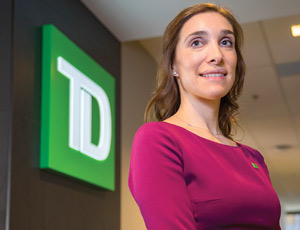
For both small and large organizations, understanding how to use data to better inform future decisions is an ongoing challenge. It’s there to be made use of, but many legal departments have yet to embrace the rewards data can deliver.
“I’m a bit of a data person. I was an investment banker before I was a lawyer so, for me, we do a lot of repeatable transactions and there’s a real opportunity if you’re able to generate the data to actually have a better sense of what you’re doing or how you’re spending with your external law firm partners,” says Brooke Hales, senior counsel at TD Bank in the corporate and treasury groups. “Sometimes, I think there is a bit of hesitancy to use the data, but there is a lot of power in the data if you’re willing to harness it.”
Hales recently undertook an initiative at TD Bank that involved rationalizing all external law firm billings for the group she represents and setting up a system to track deal costs and pricing systematically. This will enable TD to manage its external legal spend in a more organized manner and make smart pricing decisions.
She has also led a number of innovative transactions for TD including its first subordinated debt public offering into the United States. Having come into the in-house group at TD just two years ago, her nominators indicate these are great accomplishments.
“These are skills that one would typically see in counsel with many more years of in-house experience,” said Wendi Locke, partner at McCarthy Tétrault LLP, who nominated Hales.
A former investment banker with Goldman Sachs, Hales holds a law degree and an economics degree from Harvard University.
She is called to the bar in New York, Connecticut and Ontario, having passed the U.S. bar exams based on her own initiative.
“Having worked at a Bay Street firm then at TD for eight years and managed the same legal team where Brooke works, I can sincerely say that Brooke is the most insightful, intelligent and analytical young lawyer I have worked with,” said Jennifer Lee, vice president with TD Bank, one of three individuals who nominated Hales.
“Hales has negotiated innovative flat fee arrangements and completely reorganized the way the team processes bills per transaction, allowing the team to better see and understand billing trends and manage expenses,” said Lee. “For example, Brooke’s billing project resulted in the closure or consolidation of close to 10 ‘general matter’ files, pushing billing to be more accurately bucketed and fees ultimately reduced. In other cases, Brooke has negotiated per transaction spend reduction of more than 10 per cent per transaction.”
Hales says at the beginning it was about “changing habits” — originally there was billing to just the general matter buckets Lee referred to. “We would open individual matters for each issuance that we did, so it’s a little bit more work upfront, but by doing this, we were able to generate the type of data we needed to see exactly how much we spent on each type of issuance and was it more in certain jurisdictions? And was there a reduction as we did more of the same type of issuance going forward?” she says.
“The result is that we have a much clearer picture of our external counsel spend, so we’re able to tell by issuance what we spend with various firms and look for opportunities to reduce that,” she says.
Hales has been working in-house for five years and was called to the bar in 2010. She is also a member of Women in Capital Markets, sits on the paraprofessionals committee at TD and is involved in TD’s United Way fundraising efforts.
By Jennifer Brown
Category: In-house Dealmakers
Department size: Large
Company: Enbridge Inc.
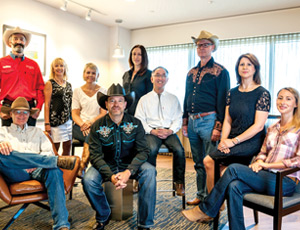
In a mega-deal involving large assets in Canada and the United States, the cross-border issuance of shares and shareholder meetings in both countries, the internal legal team at Enbridge Inc. put its best internal talent and project management processes to work in its acquisition of Spectra Energy.
In September 2016, Enbridge announced that it had entered into a definitive merger agreement with Spectra Energy Corp. It was completed on Feb. 27, 2017, and the combination created the largest energy infrastructure company in North America with an enterprise value of $165 billion. It is considered the largest ever acquisition by a Canadian company.
From the start of the transaction, Enbridge’s in-house department designed a process for handling legal work that maximized efficiency and confidentiality. Threshold legal issues, including those related to debt instruments, regulatory matters and transaction financing, were handled by David Robottom, the then-executive vice president and chief legal officer general counsel. Robottom retired during the pendency of the transaction and tragically passed away May 28.
Robottom was aided by an internal legal team led by senior legal counsel Jim Bell. The team also worked with longtime Enbridge external firms McCarthy Tétrault LLP and Sullivan & Cromwell LLP. The focus on maximizing use of internal legal resources continued throughout the transaction, including after Robottom’s retirement under the leadership of Tom Schwartz and Bob Rooney.
“We were able to get to closing in less than six months despite having supplementary requests from the competition bureau as well as from the FTC in the United States and got through the transaction without any material litigation as a result,” says Schwartz, vice president and general counsel. “We worked with our external counsel to obtain their critical support while remaining within budget despite the aggressive timeline put in front of us.”
Bell says that, in addition to bringing together their external counsel, they utilized the best of their internal legal team.
“The Enbridge legal project team managed the transaction within the context of the overall project management structure that was led by the corporate development department. David Robottom, who was EVP, general counsel at the time, established a small team that represented diverse skills, genders and geographies across Enbridge,” says Bell.
Lori Cornwall, associate general counsel in the gas distribution department in Toronto, had experience as an anti-trust lawyer and was selected to handle cross-border regulatory approvals with the competition bureau and Federal Trade Commission in the U.S.
“We built on various project management techniques we developed over the last couple of years. We had regular project meetings with status reports and each member of the team reported on his or her stream and invited external counsel to make sure we had an intergraded approach,” says Bell. “Our new colleagues from Spectra also worked with us to achieve a tremendous result in quick time.”
The deal positions both companies for growth in a time of lower commodity prices and greater regulatory burdens.
“Through Enbridge’s effective use of internal legal resources, the direct savings on due diligence, regulatory matters and the analysis of legal and contractual issues was undoubtedly at least several million dollars,” said Joseph Frumkin, managing partner, mergers and acquisitions at Sullivan and Cromwell. “In addition, the longer-term economic benefits from the structuring of and decisions made by an effective, deeply involved internal legal team should over time be multiples of the direct cost savings.”
“We have never seen such an integrated approach linking the respective expertise of in-house and external counsel. There is no stronger evidence of this than the fact that the transaction, the largest acquisition by a Canadian company ever, completed all regulatory approval processes and closed in less than six months following its announcement,” said John S. Osler, partner and chief community officer with McCarthy Tétrault LLP based in Calgary, who also nominated Enbridge for the award. He noted that the estimated savings the organization realized as a result of the in-house department taking a lead role was “in excess of $1 million.”
By Jennifer Brown
Category: In-house Dealmakers
Department: Small
Company: Canopy Growth Corp.
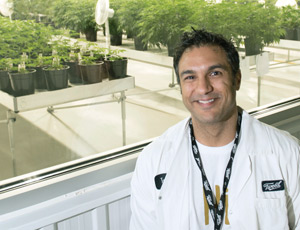
In a small town about 40 minutes outside Ottawa, Phil Shaer has been putting together some of the biggest deals in the high-stakes world of the cannabis industry.
The publicly traded Canopy Growth Corp., formerly Tweed Marijuana Inc., operates, somewhat ironically, out of 1 Hershey Drive in Smiths Falls, Ont. As renovations take place to expand the operation for cannabis production, some elements of the former chocolate factory, such as a big Hershey sign in a meeting room, remain.
Canopy is worth about $1 billion and the former production facility has more than half a million square feet of indoor and greenhouse production capacity.
Shaer has been the GC and vice president of human resources at the company that has had one of the busiest deal pipelines in the past 12 months. It has been a time of unprecedented growth and activity for both Canopy and the marijuana industry in Canada. As Shaer reflects on often, the company is taking what was once an illegal substance into the mainstream of Canadian society.
In 2016, Canopy had a groundbreaking year of deal making, led by Shaer and his small internal legal team that consists of Cailey Greenberg and Donald Henderson, both of whom came through acquisition of other cannabis companies.
“Overall, the philosophy is if we can do it in-house, that’s the deal,” says Shaer. “We need to be super-nimble, in part because the law isn’t figured out and to be honest, it’s a bit of the Wild West. Add to that the fact this company and the whole cannabis space is helping to drive a societal change. How often do you get a chance to be involved in that?”
Shaer says the challenge is thinking of different ways of getting to capacity whether it’s joint ventures or offtake agreements — he says it’s a matter of always thinking of another way to get the deal done while also keeping an eye on what competitors are doing. “Canopy is the front-runner, so it’s about staying the front-runner,” he says. “Obviously, costs are an issue; we are, not withstanding being worth over $1 billion, essentially still a startup, which sounds crazy, but it’s true. But the way I look at things and the way my team looks at it is where we add the biggest value is that we understand this business.”
Two deals in particular highlight a year of growth for the company. On Jan. 31, Canopy completed the acquisition of Mettrum Health Corp. — its biggest competitor — for $430 million. The acquisition made Canopy one of the largest producers of marijuana in the world.
“The biggest issue in our space right now is capacity, so a huge way of improving that is acquisition. We wanted their existing patients,” explains Shaer.
On June 28, 2016, Canopy announced the closing of a joint venture agreement with São Paulo-based Entourage Phytolab S.A. This saw Canopy’s wholly-owned subsidiary Bedrocan Canada Inc., Bedrocan International BV and local Brazilian partners create a new company called Bedrocan Brazil S.A. to facilitate the importation of Bedrocan’s proprietary standardized cannabis varieties into the Brazilian market. It was an international joint venture that brings Bedrocan’s cannabis genetics to patients in a market with a population in excess of 200 million.
“We move fast. The pace here is like nothing I’ve ever experienced in my career,” says Shaer. “The way my team approaches these deals is we’re adding the business sense to it. We know the business concerns we have about an acquisition and know what we want to get in terms of ROI. Are we doing the heavy lifting around drafting of the documents? No, we’re relying on the LaBarge Weinsteins, Cassels Brock and Bennett Joneses of the world to do those types of things. But we are making sure the business parts of the deal make sense.”
Through the involvement of the in-house team in each of the deals, “tens of thousands in billings were saved,” but it also ensured the in-house team could focus on the business and people side of the transactions — resulting in earlier and easier post-closing integration of acquired assets and resources.
By Jennifer Brown
Category: Working with External Counsel
Department size: Small
Company: Spin Master Corp.
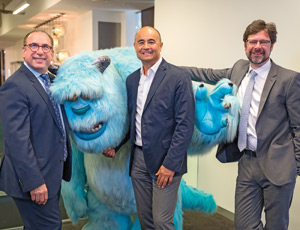
If you were a kid in the 1960s or you have children today, you’ll know the toy brands of Spin Master Corp., a Canadian company that has been in serial acquisition mode in the last few years.
With well-known brands such as Etch A Sketch, Meccano, Air Hogs, Hatchimals and PAW Patrol, Spin Master has grown from a single product toy company into a global and diversified multi-media children’s entertainment company.
From its original three-person operation, it has expanded to employ more than 1,000 people globally, with a catalogue of toy and children’s entertainment brands that are recognized around the globe.
In May 2016, Spin Master completed its acquisition of Sago Sago Toys Inc. (Sago Mini), Toca Boca AB and Toca Boca Inc. (together, Toca Boca) from the Sweden-based Bonnier Group. Toca Boca is one of the top children’s app companies in the world with five of the top 10 apps on the iTunes store and 15 million unique visitors a month.
“These opportunities don’t come around very often and in our industry we’re seeing more and more kids migrate to digital media and the online world and mobile applications,” says Spin Master’s general counsel and executive vice president, Christopher Harrs. “We felt as a company it was very important to grab on to this and we acted quickly to seize the opportunity. As our CEO loves to say, time kills deals and that’s the mantra we operate under.”
Spin Master had never purchased or done diligence on what is essentially a software company. “We needed to lean on our external counsel at Torkin Manes as to what to look for in due diligence on software such as looking at bugs, at where it’s hosted and a raft of other risk analysis issues we were not used to looking at,” Harrs says.
The deal was noteworthy for its complexity and the speed at which it was negotiated and completed, which lawyers at Torkin Manes say is attributed to Harr’s approach. A deal that would usually take three months to finalize was completed in three weeks. “We felt we needed to act quickly if we were going to obtain the prize,” says Harrs.
Spin Master’s ability to meet the Bonnier Group’s strict timelines was a critical factor in its successful pitch for the company.
The company has completed five acquisitions since its IPO in July 2015. Given the volume of deals, it is critical that Harrs and his four-person legal department develop efficiencies.
“One of the problems of doing a deal quickly is due diligence always takes up a considerable amount of time. This time we negotiated the long-form agreement in tandem with the due diligence and created an acquisition/due diligence team early on,” he says. “There has to be a degree of comfort and trust and Torkin Manes and Jeff Cohen have been outside counsel from the beginning. Jeff picks the right team to staff our deals. It makes it easier to allow them to move issues forward.”
Spin Master also contracted with KPMG to do a “deep dive” into the financials and look at an appropriate working capital number to assume on closing.
Pillsbury LLP was U.S. outside counsel to Spin Master as was Phillips Nizer LLP. DLA Piper LLP was on for the Bonnier Group.
“The reason this deal went so quickly was to have external expertise right off the bat helping us do all the vetting and negotiation and due diligence as required. I’m not shopping around for external counsel,” says Harrs.
Harrs has also fine-tuned the due diligence process within the legal department. Co-operating seamlessly with the company’s 10-to-15-person due diligence team, the company’s in-house and external lawyers are able to review a transaction and identify any liability issues quickly with precision. As the lawyers are engaged early in the process, they are able to simultaneously perform due diligence while drafting and negotiating a purchase agreement that reflects that due diligence “in real time.”
The value of both of these measures was demonstrated during the Sago Mini and Toca Boca acquisition. The deal involved an extremely tight time frame and multiple jurisdictions, it also presented a challenge in the form of evaluating the business model and value of three separate yet integrated corporate entities engaged in a new-economy business.